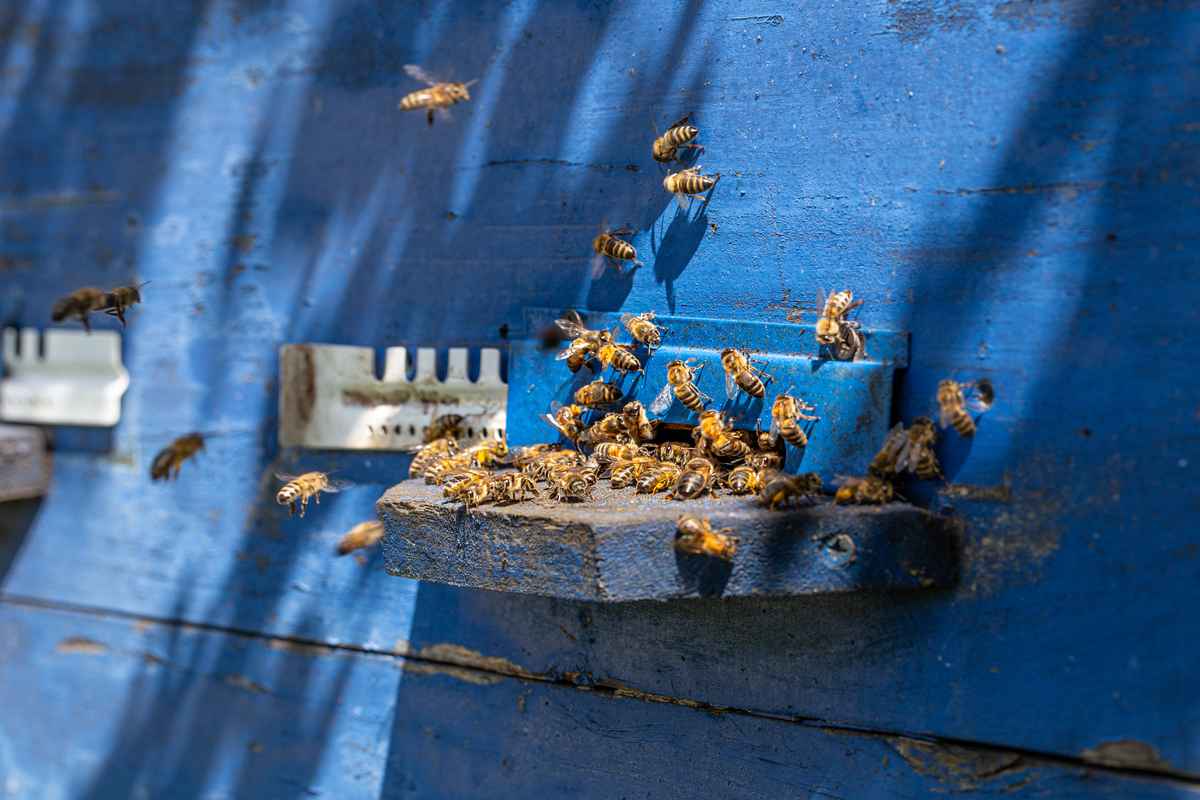If you want to get rid of wasps, you’ll be relieved to know that several natural wasp repellents genuinely work in ridding your home of these pesky pests. These wasp repellents will keep them at bay during the spring and summer, which is important because no one enjoys being stung by a wasp.
Some of these house wasp repellant strategies include stopping wasps from visiting and constructing nests, while others will show you how to get rid of wasps already there and nests they have made. Use any of these solutions, or all of them together, to eliminate the annoying insects.
Quick Access
How To Avoid Wasp Coming To Your House?
If you have a problem with wasps, you are probably wondering “How To Avoid Wasp Coming To Your House?” and what steps you should take to address the issue. Because of the potential harm that chemical wasp control can cause to the environment, as well as to your children, pets, and possibly even yourself, its use is not particularly desirable.
Let’s discuss some interesting facts on how to get rid of a wasps nest naturally that may make it easier for you to learn to coexist with them. In addition, we will share some useful information on eliminating wasps and natural wasp repellents.
2 Of My Favourite Method To Get Rid Of Wasps
#1: Wasp Trap
Wasp traps are an easy and effective technique to get rid of wasps. These traps entice wasps with a delicious, sticky substance and trap them. Wasp traps can be bought at most hardware stores or made with a few components.
A plastic bottle, sweet liquid like fruit juice or soda, and a sharp knife or scissors are needed to build a wasp trap. Start by cutting the plastic bottle’s cap right below the inward curve. Fill the bottom third of the bottle with sweet liquid. Invert the top half of the bottle and insert it into the bottom half so the cut sides touch. The top half of the bottle should hold the liquid. Finally, poke a few small holes in the bottle below the liquid to let the wasps in.
Place the trap in the wasps’ activity location, but far enough away from your living quarters so they won’t bother you. When filled, empty the trap. The confined wasps will dehydrate and die, making this procedure environmentally benign and safe for humans and animals.
#2: Peppermint Oil
Peppermint oil is among the way to get rid of wasps safely and effectively; that can naturally repel wasps from your home. Wasps avoid peppermint-scented places. Mix a few drops of peppermint oil with water in a spray bottle and spray wasp-prone regions. Place cotton balls with a few drops of oil near doors and windows to deter wasps.
Mix peppermint oil with water and dish soap in a spray bottle and spray wasp nests. Soap helps the combination attach to the nest, while peppermint oil repels wasps and may cause them to leave. Peppermint oil is safe for humans and animals, but high amounts can be poisonous. Use it sparingly and keep it away from kids and pets.
7 Other Methods That Can Help You
#1. Trash Cans Should Be Sealed
What exactly is contained within the trash cans? However, they frequently have stale food scraps or liquid in addition to garbage. And since wasps have a voracious appetite, they will be especially drawn to your trash cans if you have not kept them sealed up well. They may even try to build a nest around your trash cans. Be careful to put a lid on your garbage cans and recycling containers to keep out unwanted guests. This rule applies to both types of containers.
#2. Make a Soap and Water Solution
A good defense against wasp nests of any size is a mixture of soap and water is one of the best ways to get rid of wasps safely and effectively. Obtain a spray bottle, pour two tablespoons of dish soap into it, and then fill the remaining space with water. After giving it a good shake, generously spray the soap and water combination on the nest. Because the soap will clog up their breathing pores, they will expire almost immediately after use.
#3. Fill Up The Gaps And Tears
Because wasps like to nest in cracks and hollows in the ground, you will want to make sure that any cracks in your home or foundation are properly sealed. Ensure these holes are sealed and filled to prevent wasps from building nests on your property or entering your house.
You should pay particular attention to any cracks you discover on the borders of the house siding or in the areas where wires enter the residence. It is best to perform this task in the fall before any wasp nests are established in the spring.
#4. Hang A Penny-filled Bag Of Water
It is a clever little gimmick. If you place a bag with water and a penny above your entryway, most flying insects won’t bother coming inside. It is not entirely obvious why this strategy is effective.
Others say that the dazzling reflection drives away the wasps, even though some believe the wasps see the bag and assume it looks like a spider web.
#5. Get Rid of Any Food That Is Unwanted
Before you can get rid of wasps safely and effectively, there are a few steps you need to take to ensure that wasps don’t even get a chance to invade your territory in the first place. To begin, clear the space outside your house of any uneaten food remnants or crumbs that may be present. Wasps are drawn to your grill because of its abundance of protein, which draws them there frequently. Wasps can be avoided by maintaining a high level of cleanliness in this area.
Wasps adore sugary drinks, so if you keep soda cans in your yard, you must ensure they are completely emptied before storing them there. Wasps are far less likely to come and bother you if they can’t find anything tasty for them to eat in the area around your house.
#6. Make Use Of Successful Home Remedies
You can experiment with various home treatments to eliminate wasps without chemicals. Wasps can be efficiently exterminated with vinegar.
To produce your homemade wasp repellant, mix up one cup of water, two cups of sugar, and two cups of apple cider vinegar. Before placing it close to the nest to attract and kill wasps, thoroughly combine the ingredients and mix them.
#7. Wasp-Repellent Plants for Your Landscape
Planting wasp-repellent plants next to your home, such as spearmint, thyme, eucalyptus, wormwood, and citronella, is one strategy to reduce the number of wasps in the area. It would help if you planted these anywhere near your home, especially in areas where you previously encountered wasps. Wasps will avoid flowering plants such as marigolds, geraniums, and pennyroyals because of their attractive flowers.
You should avoid putting several plants in your yard since wasps are attracted to them, and they will nest there. This category includes yarrow, Queen Anne’s lace, and sweet fennel. These should not be planted in any area with a low wasps tolerance.
Conclusion
In conclusion, although wasps can be a nuisance for certain individuals and even pose a risk to their safety, several efficient ways exist to eliminate them. Various natural and humane methods to get rid of wasps safely and effectively, such as hanging a fake wasp nest, using essential oils, setting traps with vinegar, and using shiny things.
If everything else fails, you can always hire a professional to assist you in completing the task. When interacting with wasps, it is important to remember to take safety precautions and wear protective clothing when necessary.

